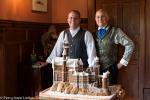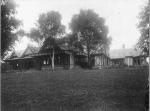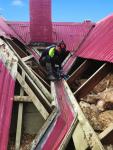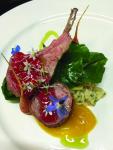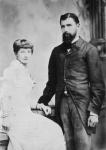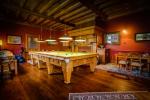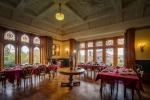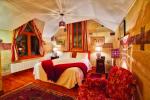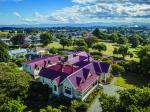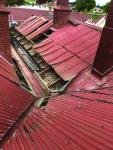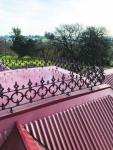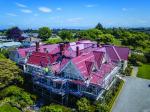Restoring New Zealand History
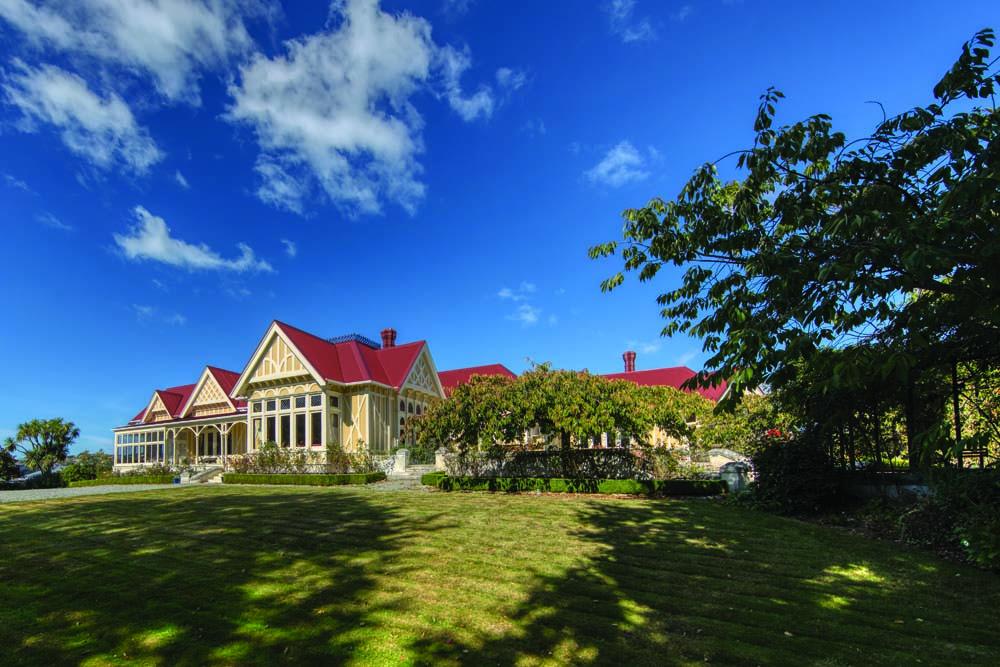
A worldwide search for a B&B where they could enjoy semi-retirement brought James Glucksman and James Boussy to Oamaru.
During their search, the couple realised that they would be more suited to running a high-end lodge and they found that in the historic home
Pen-y-bryn. James Glucksman said they looked online for places in Italy, France, South Africa and New Zealand.
“But out of the more than 30 agents we contacted, only one agent – whom we had contacted because of a listing of hers in Hanmer Springs – asked us what we wanted, which was a big garden for my partner and a big kitchen and dining room for me – and she suggested we look at Pen-y-bryn.”
Pen-y-bryn Lodge is a Victorian mansion built in 1889 for John Bulleid, a successful local businessman, and his family, and is reputedly the largest single-storey wooden dwelling in Australasia. “Pen-y-bryn” is Welsh for “top of the hill” and is an apt name as the lodge sits atop South Hill.
The home is unusual in Oamaru, where the absence of trees when the British settlers arrived meant most buildings used the local limestone. But the Bulleids were concerned about earthquakes, so wood for the frame of the building was brought over from the West Coast. They also wanted to keep with English tradition, so the interior is constructed of English oak that the Bulleids had shipped all the way from Britain.
In 2010, the two Jameses, as they are known, bought Pen-y-bryn, which Heritage NZ has granted Category One historic status.
They then set about renovating the historic home as the need and opportunity arose, while staying within Heritage NZ guidelines.
James said, “While it would be nice to say that we had a coherent plan for the execution of the projects, it’s fair to say that a good deal of it was approached in an ad hoc manner, taking advantage of opportunities when they presented themselves.
“The installation of insulation above the ceiling and below the floors was, in our view, urgent, and was the first major improvement we made, since we couldn’t bear the idea of our money literally going up in smoke in an effort to buy enough fuel to operate the heating system.
“Once we installed the insulation and installed a zoned heating system – the old system was all on one zone, so you either heated the whole 920sq m house, plus the 350sqm annex, or you heated nothing – our heating bills were cut by about two-thirds.
That insulation was installed in 2011, and this year that was followed up by the addition of blow-in insulation in the walls.
James said, “When we took over the house and invited locals up for an event, they were reluctant to give up their jackets when they came in but they are more willing to do that now because it is a lot more comfortable.”
After the first round of insulation upgrade, work began in the bathrooms to replace the linoleum floors with underfloor heating and period-appropriate tiles, which “was dictated by aesthetics more than anything, though the fact that the floors did not really suit a property like ours that was drawing international guests, who were paying for the privilege of staying here, played a very big role in the decision”.
In 2015, work began on expanding the annex. James said, “Because of the fire in the Annex in 1925, that building only bears a Category-Two heritage listing, so we were permitted to knock out the back wall as long as we didn’t alter the building’s footprint – and luckily, a ground-floor extension had been built sometime before, giving us enough space to do what we wanted. The result of this work is that the three rooms in the Annex went from being a bit on the cosy side to being our largest rooms, and allowed us to charge a premium for them. They are now by far our best-selling rooms.”
A year later they upgraded the home’s wiring and the following year the major task of replacing the ageing roof began.
James said, “The roof replacement was planned from the date we purchased the house —since the roof was original, we knew it was not long for this world, and in many spots it was far from waterproof. We made do with patches initially, but eventually that was no longer feasible so we began what was conceived of as a three-year project to replace it.”
James said the work was planned for the low season so as to minimise disruption to guests. The work was also done in stages due to the sheer size of the project “not to mention there not being enough money in the bank for us to pay for it all at once”.
Jessica Jones, of PlaceMakers Oamaru, coordinated the 795sq m roofing job, which was carried out by Josh Tulia of North Otago Roofing.
She said, “Re-roofing began in May 2017 over the south end of the building, originally allowing two weeks to complete works. This was no mean feat for two roofers to complete in time after only looking at pictures of the roof, and working on my estimated allowances, which did not take into account the full extent of the work involved.
“Stage 2 started in May 2018 to coincide with the clients’ quieter times and have the least amount of impact on their business as possible – quite a hard feat when you have two roofers scrambling around the roof from morning to evening. The second stage took a more realistic four weeks to complete, including the dismantling, refurbishment and replacement of the ‘widow’s peak’ flat roof and decorative steel work.”
Stage 3 over the private area began in October 2018 and took a total of five weeks to complete – including replacement of the veranda and flat roof areas with a custom-made tray, which Josh designed to look as close to the existing roof as possible.
Jessica added, “Our contractor was able to complete some minor timber repairs to purlins himself, other details around the decorative barges and eave framing were a little more tricky, so we called in Ray from Kennard Construction to help out. The clients were very understanding and wanted to ensure the roof would look as good as it could, despite all of these unforeseen additional costs which kept arising.”
In keeping with the traditional look, Corrugate profile in ‘Scoria’ was used for the roofing.
More recent projects include installing a tiled terrazzo between the main building and Annex with a fire table and sound system, and restoring the leadlight doors and windows in the entry foyer. The couple have also focused on harmonising the decor of the lodge, which is filled with antiques and furnishings that date back to the original owners, who used a four-year trip to Europe during the construction of the house to source fittings and artworks to display in their new home.
James said, “These have been supplemented by pieces left to us by the second family to own the house, the McDiarmids, who were here from 1923 to 1994, including the competition-size billiards table, purchased from the New Zealand Government when they found that Parliament only had room for two such tables, rather than the three that they had commissioned.”
The restoration of Pen-y-bryn allows the two Jameses a grand backdrop to host and entertain guests.
Born in the United States, but now NZ citizens, the two Jameses have worked around the world and are renowned for their dinner parties.
Owning Pen-y-bryn allows James Glucksman to indulge his love of fine wine and food, cooking a range of exotic and classic dishes for guests. James Boussy is a talented gardener, baker and home renovator – given plenty of opportunity to use his skills at the lodge.
James Glucksman said of the restoration journey, “When we bought the property in 2010, I am not sure that we had that firm a grip on just how much work would be required to bring the house up to the standards we had set for ourselves, but once we got started it sort of took on a life of its own.
“My partner James had more of an idea of what was required but he has been very good at keeping me ignorant of how much needed to be done because I would have got stressed out about how we could afford it.
“He has a good long-term view of what can be done and what should be done and is good at strategising.”
He added, “Fortunately, the popularity of Oamaru as a destination for overseas visitors, combined with the good reviews we have received from the many guests who have made their way to us over the years means that we have had the good fortune of being able to invest the funds needed to keep Pen-y-bryn alive and indeed to make her more likely to last another 130 years or more.”

